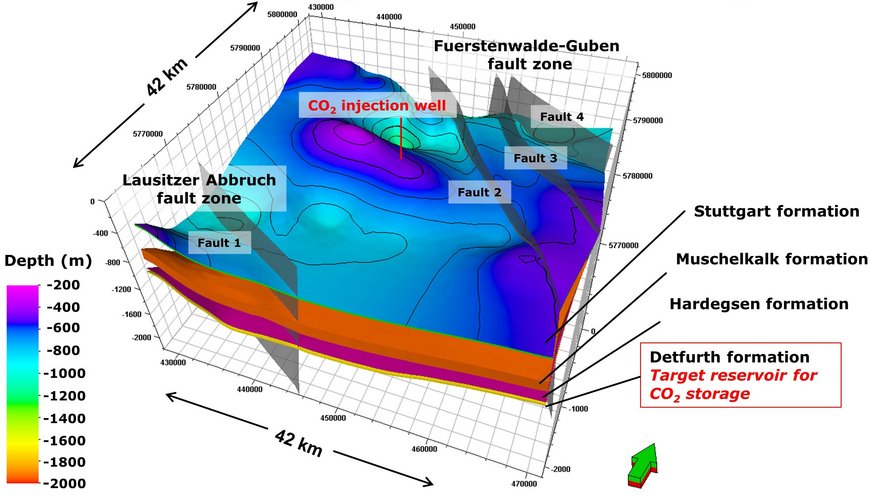Groundwater salinization
Assessment of brine migration into shallower aquifers via permeable fault zones as a result of geological CO2 storage
Pressure elevation in deep saline aquifers, for example, as a result of geological storage of carbon dioxide (CO2) may cause salinization of shallower freshwater resources by upward migration of displaced brine. This can happen, if the storage formation is hydraulically connected to potable groundwater, for instance by permeable fault zones serving as preferential leakage pathways. Therefore it is important to investigate which fault zone architectures and permeability structures promote upward brine migration as a result of CO2 injection into a saline aquifer and how the degree of salinity in formations overlying the storage reservoir is influenced. The implementation of a static geological 3D model based on structural data of a potential CO2 storage site provides the basis to carry out large-scale numerical multi-phase multi-component (CO2, NaCl, H2O) flow simulations using the reservoir simulator TOUGH2-MP/ECO2N (Zhang et al., 2008).
Besides upward brine migration, an increasing pore pressure as a result of CO2 storage may induce changes in the initial stress field and thus a reactivation of faults that potentially were inactive and impermeable prior to the injection. In this context, coupled hydromechanical simulations allow the assessment of the geomechanical processes induced by CO2 injection into a saline aquifer and their impact especially with regard to fault zone permeability.


